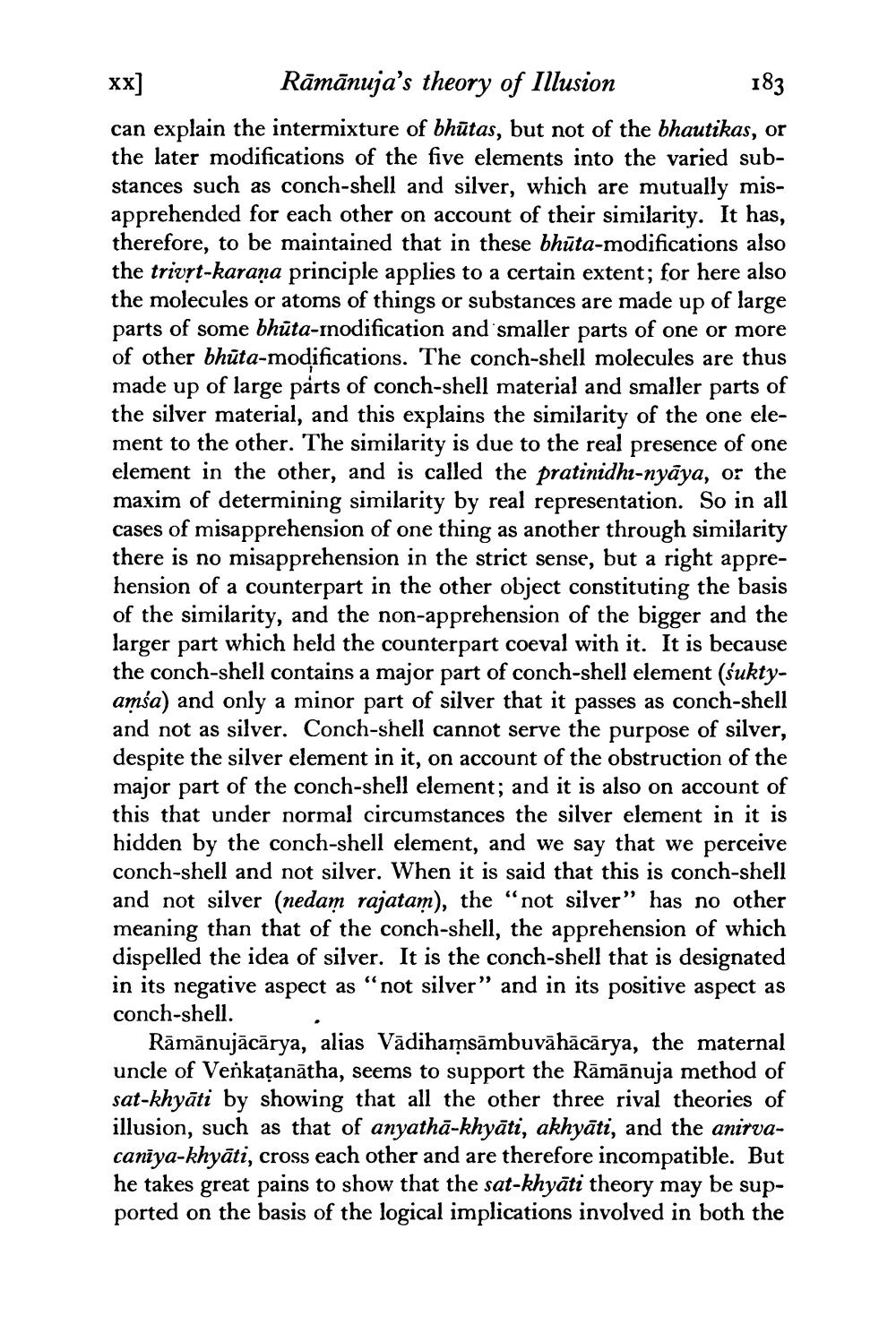________________
XX Rāmānuja's theory of Illusion
183 can explain the intermixture of bhūtas, but not of the bhautikas, or the later modifications of the five elements into the varied substances such as conch-shell and silver, which are mutually misapprehended for each other on account of their similarity. It has, therefore, to be maintained that in these bhūta-modifications also the trivst-karaña principle applies to a certain extent; for here also the molecules or atoms of things or substances are made up of large parts of some bhūta-inodification and smaller parts of one or more of other bhūta-modifications. The conch-shell molecules are thus made up of large parts of conch-shell material and smaller parts of the silver material, and this explains the similarity of the one element to the other. The similarity is due to the real presence of one element in the other, and is called the pratinidhi-nyāya, or the maxim of determining similarity by real representation. So in all cases of misapprehension of one thing as another through similarity there is no misapprehension in the strict sense, but a right apprehension of a counterpart in the other object constituting the basis of the similarity, and the non-apprehension of the bigger and the larger part which held the counterpart coeval with it. It is because the conch-shell contains a major part of conch-shell element (suktyamsa) and only a minor part of silver that it passes as conch-shell and not as silver. Conch-shell cannot serve the purpose of silver, despite the silver element in it, on account of the obstruction of the major part of the conch-shell element; and it is also on account of this that under normal circumstances the silver element in it is hidden by the conch-shell element, and we say that we perceive conch-shell and not silver. When it is said that this is conch-shell and not silver (nedam rajatam), the "not silver” has no other meaning than that of the conch-shell, the apprehension of which dispelled the idea of silver. It is the conch-shell that is designated in its negative aspect as "not silver” and in its positive aspect as conch-shell.
Rāmānujācārya, alias Vādihamsāmbuvāhācārya, the maternal uncle of Venkațanātha, seems to support the Rāmānuja method of sat-khyāti by showing that all the other three rival theories of illusion, such as that of anyathā-khyāti, akhyāti, and the anirvacanīya-khyāti, cross each other and are therefore incompatible. But he takes great pains to show that the sat-khyāti theory may be supported on the basis of the logical implications involved in both the




